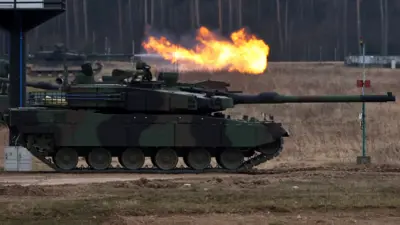We've updated our Privacy and Cookies Policy
We've made some important changes to our Privacy and Cookies Policy and we want you to know what this means for you and your data.
Coronavirus: UK R number 'between 0.8 and 1'
- By Rachel Schraer
- Health reporter
The UK is at an "extremely precarious" point, according to the chief medical adviser, despite signs Covid infections are beginning to fall.
The virus's reproduction rate is estimated to be at or below one for the first time since early December.
Anything below one means the epidemic is shrinking.
But cases are falling from a "very, very high level", Prof Chris Whitty said - and may still be increasing in some areas.
"A very small change and it could start taking off again from an extremely high base," he warned.
Speaking at a Number 10 press conference on Friday evening, the UK's chief scientific adviser, Sir Patrick Vallance, said the "awful" death rate would stay high "for a little while before it starts coming down".
"That was always what was predicted...and I think the information about the new variant doesn't change that".
Early evidence suggests the variant of coronavirus that emerged in the UK may be more deadly, although findings are preliminary and there is a high level of uncertainty.
Dr Susan Hopkins at Public Health England said there was "evidence from some but not all data sources which suggests that the variant of concern which was first detected in the UK may lead to a higher risk of death than the non-variant.
"Evidence on this variant is still emerging and more work is under way to fully understand how it behaves."
The Department of Health and Social Care said while the UK's R or reproduction number, might be below one - meaning a shrinking epidemic - overall, "cases remain dangerously high and...it is essential that everyone continues to stay at home, whether they have had the vaccine or not."
Meanwhile, Office for National Statistics (ONS) figures suggested cases were decreasing slightly or levelling off across Britain.
But infections are falling more slowly than they did during the first lockdown - by somewhere around a quarter every fortnight compared with a halving back in April.
A further 40,261 cases, and 1,401 deaths were recorded on Friday in the UK.
More than five million people had been given a first dose of the vaccine by 21 January, and about half a million had received their second dose.
'Rates remain high'
Prime Minister Boris Johnson has previously said it is "too early" to say whether England's Covid restrictions will be able to end in the spring.
While cases are falling or stable across the rest of the UK, in Northern Ireland cases have continued to rise and the new, more infectious strain has overtaken the older variant of the virus as of the start of January.
During the week ending 16 January, about one in 55 people in England had the virus, the ONS estimated, with one in 35 in London testing positive.
One in 100 people had the virus in Scotland and one in 70 in Wales.
But in Northern Ireland infections have shot up from an an estimated one in 200 people testing positive in the week to 2 January, to one in 60 last week.
ONS statistician Sarah Crofts said while fewer people were testing positive in England, "rates remain high and we estimate the level of infection is still over one million people".
And, she pointed out, "the picture across the UK is mixed".
A survey by tech company ZOE and King's College London, based on swabs of people with and without symptoms, also suggested the R number could be at 0.8.
And it estimated symptomatic cases had fallen by a quarter since last week.
Meanwhile, the proportion of people testing positive for the new Covid variant has risen considerably in Scotland, Wales and Northern Ireland, ONS data suggest.
But the new strain, which remains by far the main source of infections in England, has yet to overtake the old strain in Scotland and Wales.
Within England, the proportion of infections that appear to be due to the new variant remained stable, but the gap between the regions is narrowing.
In the figures covering 2 January, 80% of infections looked like the new variant in London compared to 30% in the North East.
Two weeks later, that gap had narrowed to 70% in London versus 50% in the North East.
It is not clear what is behind the small fall in London, but it may be down to behaviour change, or other variants like the South Africa strain now in circulation and diluting the numbers.
Follow Rachel on Twitter
Top Stories
Features & Analysis
Most read
Content is not available








